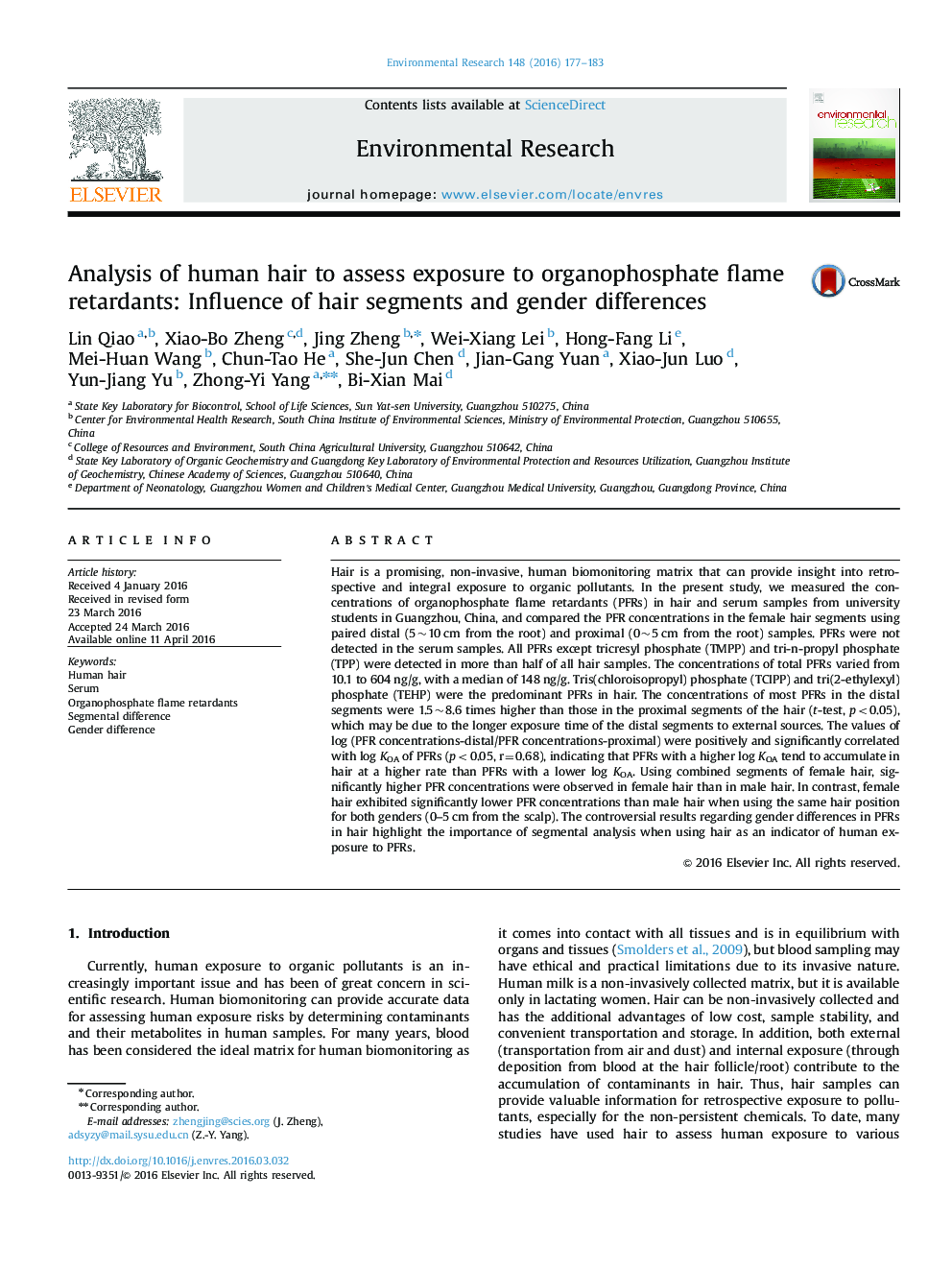| Article ID | Journal | Published Year | Pages | File Type |
|---|---|---|---|---|
| 6351498 | Environmental Research | 2016 | 7 Pages |
â¢Most PFRs had higher concentrations in distal segments than those in proximal segments.â¢PFRs with higher log KOA tend to accumulate in hair at higher rate.â¢Female hair had higher PFR concentrations than male when using combined segments.â¢Male hair had higher PFR concentrations when using the same position of hair.
Hair is a promising, non-invasive, human biomonitoring matrix that can provide insight into retrospective and integral exposure to organic pollutants. In the present study, we measured the concentrations of organophosphate flame retardants (PFRs) in hair and serum samples from university students in Guangzhou, China, and compared the PFR concentrations in the female hair segments using paired distal (5~10Â cm from the root) and proximal (0~5Â cm from the root) samples. PFRs were not detected in the serum samples. All PFRs except tricresyl phosphate (TMPP) and tri-n-propyl phosphate (TPP) were detected in more than half of all hair samples. The concentrations of total PFRs varied from 10.1 to 604Â ng/g, with a median of 148Â ng/g. Tris(chloroisopropyl) phosphate (TCIPP) and tri(2-ethylexyl) phosphate (TEHP) were the predominant PFRs in hair. The concentrations of most PFRs in the distal segments were 1.5~8.6 times higher than those in the proximal segments of the hair (t-test, p<0.05), which may be due to the longer exposure time of the distal segments to external sources. The values of log (PFR concentrations-distal/PFR concentrations-proximal) were positively and significantly correlated with log KOA of PFRs (p<0.05, r=0.68), indicating that PFRs with a higher log KOA tend to accumulate in hair at a higher rate than PFRs with a lower log KOA. Using combined segments of female hair, significantly higher PFR concentrations were observed in female hair than in male hair. In contrast, female hair exhibited significantly lower PFR concentrations than male hair when using the same hair position for both genders (0-5Â cm from the scalp). The controversial results regarding gender differences in PFRs in hair highlight the importance of segmental analysis when using hair as an indicator of human exposure to PFRs.
